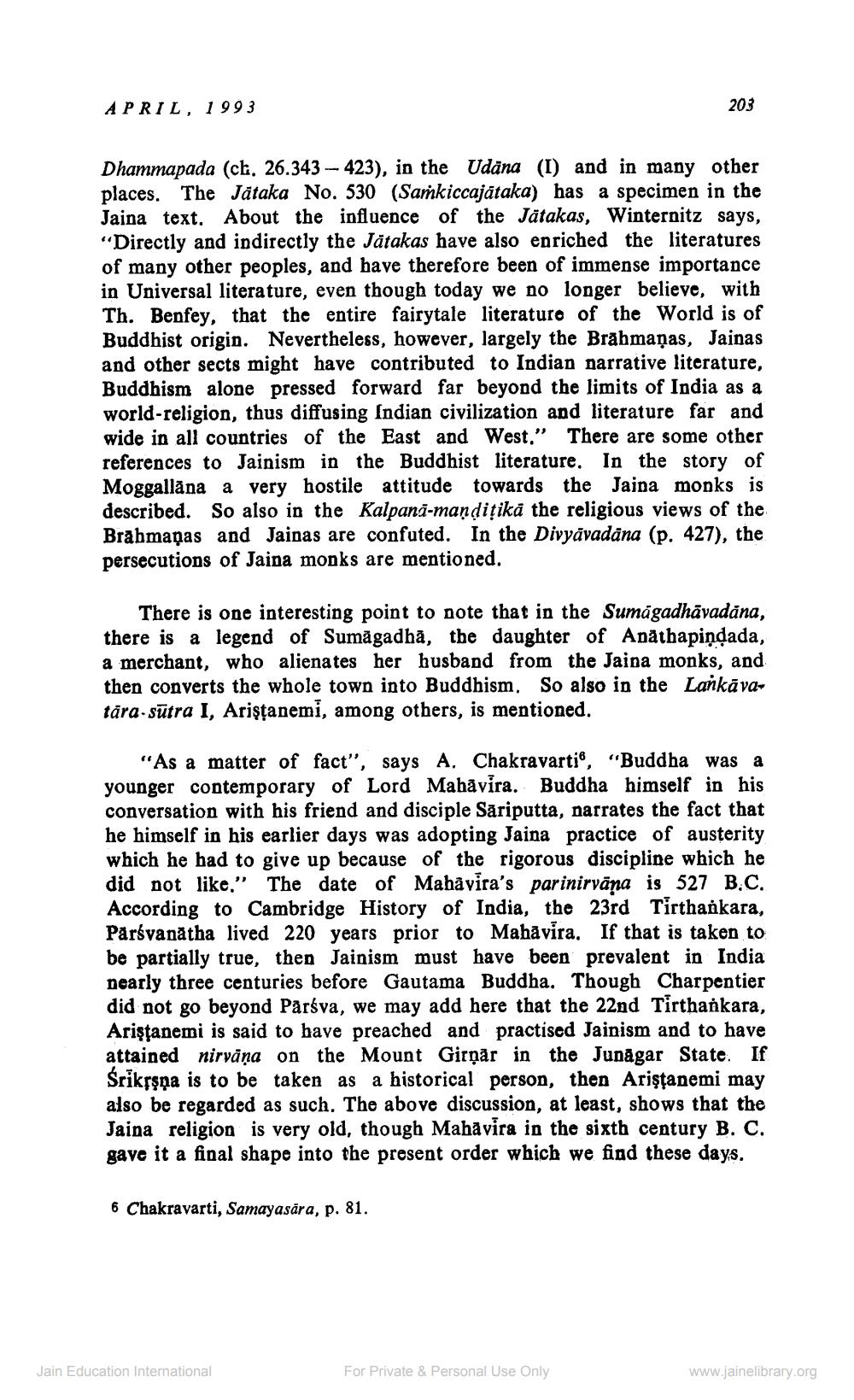________________
APRIL, 1993
Dhammapada (ch. 26.343-423), in the Udana (I) and in many other places. The Jataka No. 530 (Samkiccajātaka) has a specimen in the Jaina text. About the influence of the Jātakas, Winternitz says, "Directly and indirectly the Jātakas have also enriched the literatures of many other peoples, and have therefore been of immense importance in Universal literature, even though today we no longer believe, with Th. Benfey, that the entire fairytale literature of the World is of Buddhist origin. Nevertheless, however, largely the Brahmaņas, Jainas and other sects might have contributed to Indian narrative literature, Buddhism alone pressed forward far beyond the limits of India as a world-religion, thus diffusing Indian civilization and literature far and wide in all countries of the East and West." There are some other references to Jainism in the Buddhist literature. In the story of Moggallana a very hostile attitude towards the Jaina monks is described. So also in the Kalpana-maṇḍiṭikā the religious views of the Brahmanas and Jainas are confuted. In the Divyāvadāna (p. 427), the persecutions of Jaina monks are mentioned.
203
There is one interesting point to note that in the Sumagadhāvadāna, there is a legend of Sumagadha, the daughter of Anathapiṇḍada, a merchant, who alienates her husband from the Jaina monks, and then converts the whole town into Buddhism. So also in the Lankava tāra sutra I, Arişțanemi, among others, is mentioned.
"As a matter of fact", says A. Chakravarti", "Buddha was a younger contemporary of Lord Mahavira. Buddha himself in his conversation with his friend and disciple Sariputta, narrates the fact that he himself in his earlier days was adopting Jaina practice of austerity which he had to give up because of the rigorous discipline which he did not like." The date of Mahavira's parinirvāņa is 527 B.C. According to Cambridge History of India, the 23rd Tirthankara, Parsvanatha lived 220 years prior to Mahavira. If that is taken to be partially true, then Jainism must have been prevalent in India nearly three centuries before Gautama Buddha. Though Charpentier did not go beyond Parśva, we may add here that the 22nd Tirthankara, Arişţanemi is said to have preached and practised Jainism and to have attained nirvana on the Mount Girṇar in the Junagar State. If Śrikṛṣṇa is to be taken as a historical person, then Aristanemi may also be regarded as such. The above discussion, at least, shows that the Jaina religion is very old, though Mahavira in the sixth century B. C. gave it a final shape into the present order which we find these days.
6 Chakravarti, Samayasara, p. 81.
Jain Education International
For Private & Personal Use Only
www.jainelibrary.org




